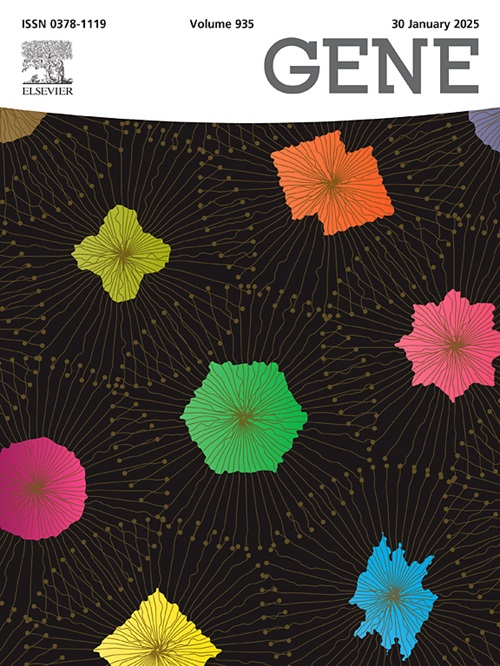Menaquinone-4 ameliorates abdominal aortic aneurysm by suppressing ferroptosis through NRF2/GCLM axis
IF 2.4
3区 生物学
Q2 GENETICS & HEREDITY
引用次数: 0
Abstract
Abdominal aortic aneurysm (AAA) remains a lethal vascular disease lacking effective pharmacotherapies, with ferroptosis emerging as a critical pathological mechanism. This study explored the therapeutic potential of menaquinone-4 (MK4), a vitamin K2 isoform, in both porcine pancreatic elastase-induced AAA mice and Erastin-treated vascular smooth muscle cells (VSMCs). Our investigations revealed that MK4 treatment significantly attenuated AAA progression, reducing aortic dilation while maintaining vascular structural integrity. Importantly, MK4 demonstrated an excellent safety profile in all experimental models, including serum biomarker analysis. Mechanistically, MK4 exerted potent anti-ferroptotic effects in VSMCs by alleviating iron overload and reactive oxygen species (ROS) level, suppressing lipid peroxidation, and restoring glutathione homeostasis. Through RNA sequencing and chromatin immunoprecipitation assays, we identified that MK4 activates the nuclear factor erythroid-2 like 2 (NRF2)/glutamate-cysteine ligase modifier subunit (GCLM) pathway, with molecular docking confirming strong binding between MK4 and NRF2. The essential role of GCLM was validated using pharmacological inhibition, which completely abolished MK4’s protective effects. Clinical relevance was further supported by pathological iron accumulation and decreased GCLM expression in human AAA specimens compared to controls. These findings establish that MK4 inhibits AAA progression through NRF2-mediated transcriptional activation of GCLM to suppress ferroptosis, positioning it as a promising and clinically translatable therapeutic candidate for this devastating vascular disease.
甲基萘醌-4通过NRF2/GCLM轴抑制铁下垂改善腹主动脉瘤。
腹主动脉瘤(AAA)是一种致命的血管疾病,缺乏有效的药物治疗,铁下垂是其重要的病理机制。本研究探讨了维生素K2亚型甲基萘醌-4 (MK4)在猪胰腺弹性酶诱导的AAA小鼠和erastin处理的血管平滑肌细胞(VSMCs)中的治疗潜力。我们的研究显示,MK4治疗可显著减轻AAA的进展,减少主动脉扩张,同时保持血管结构的完整性。重要的是,MK4在包括血清生物标志物分析在内的所有实验模型中都表现出良好的安全性。机制上,MK4通过减轻铁超载和活性氧(ROS)水平,抑制脂质过氧化,恢复谷胱甘肽稳态,在VSMCs中发挥了有效的抗铁沉作用。通过RNA测序和染色质免疫沉淀实验,我们发现MK4激活核因子红细胞2样2 (NRF2)/谷氨酸-半胱氨酸连接酶修饰子亚单位(GCLM)通路,分子对接证实MK4与NRF2之间存在强结合。通过药理抑制验证了GCLM的重要作用,它完全消除了MK4的保护作用。与对照组相比,人类AAA标本的病理性铁积累和GCLM表达降低进一步支持了临床相关性。这些研究结果表明,MK4通过nrf2介导的GCLM转录激活抑制AAA进展,从而抑制铁下垂,使其成为这种破坏性血管疾病的有前途的临床可翻译的治疗候选药物。
本文章由计算机程序翻译,如有差异,请以英文原文为准。
求助全文
约1分钟内获得全文
求助全文
来源期刊

Gene
生物-遗传学
CiteScore
6.10
自引率
2.90%
发文量
718
审稿时长
42 days
期刊介绍:
Gene publishes papers that focus on the regulation, expression, function and evolution of genes in all biological contexts, including all prokaryotic and eukaryotic organisms, as well as viruses.
 求助内容:
求助内容: 应助结果提醒方式:
应助结果提醒方式:


